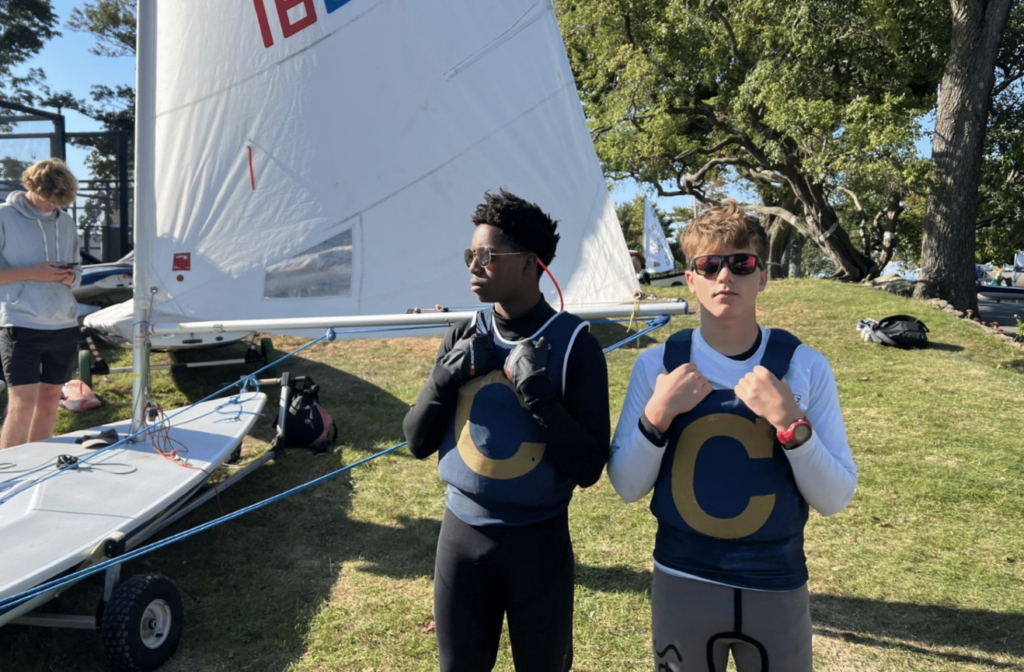Athletics have a history of being predominantly male, however, this changed in the late nineteenth century, when women were introduced to sports. Since then, there has been a level of sexism when it comes to athletics, whether professional or interscholastic, apparent in every sport. It is no secret that fans and boosters are particular when it comes to what sport they want to show their support for. Unfortunately, the systemic belief that men are more suited for sports still has a dormant presence in society today.
How does this relate to Choate? Choate provides all of its students with a variety of interscholastic sports. Each program (sans field hockey, football, and wrestling) has its boys’ teams and girls’ teams running in parallel. This is ideal and leaves little room for gender inequality within the Athletic Department.
The apparent sexism in Choate sports lies in the promotion and fan involvement. While spectators have the right to choose what sports they do and don’t want to watch, it is worth pointing out that there are some instances where the gender bias of spectators is simply undeniable.
Jaiden Cruz ’18, most commonly referred to as Cruz, is a two-year fifth form football player. When asked about his thoughts surrounding the idea of promotion and fan involvement in girls’ teams versus boys’ teams, he said, “I only ever watch basketball and volleyball. And I know that the Girls’ Varsity Volleyball team winning the NEPSAC went almost unnoticed. Also, the boys’ varsity basketball team gets a lot more attention, even though the girls’ team performs better. People don’t really notice it, but the girls’ teams are tearing up the league right now.”
Choate is a relatively small school, and there is almost no excuse for news to not get around – especially if a team has won a prestigious championship. However, if we look at how fast news about football or boys’ ice hockey spreads in comparison with girls’ volleyball or girls’ ice hockey, there is a stark comparison. While the School makes it a priority to give equal acknowledgement to each team, it is hard to overlook this bias in student interest.
Football, hockey, baseball, and basketball all get an enormous amount of student support and turnout, as well as that of notable alumni who are still present in the programs. And with a strong social media presence, the boys’ teams are consistently increasing their spectator turnout and growing the gap. Vincenzo DiNatalie ’19 commented, “There’s a huge tendency for spectators to attend male sporting events over female events.”
When asked if they notice a gender bias in the spectators of Choate sports, many students said yes. Katerina Taetle ’19 has an interesting perspective on why this might be, saying, “I think girls flock to guys who play sports because of an outdated idea that they are cooler than guys who don’t.” This attention that male athletes gets caters to the hyper-masculinity trend in our society — playing sports and getting female atention go hand-in-hand. Taetle added, “Girls don’t support girls the way guys support guys.”
This is not to say that girls blatantly disregard girls’ teams. But at male sporting events, there are always more guys there to support people on the team, even if they don’t know each other very well. This creates a bigger crowd. The relative lack of support for female teams, from male and female spectators alike, reflects a deeply engrained trend in American society that Choate has been unable to dismantle. It is a systemic issue pushed onto us.
This is not an attempt to discourage people from watching male athletes, but to highlight a pressing example of gender inequality on campus. The first step to targeting this discrepancy in athletics is opening up a conversation about it.



